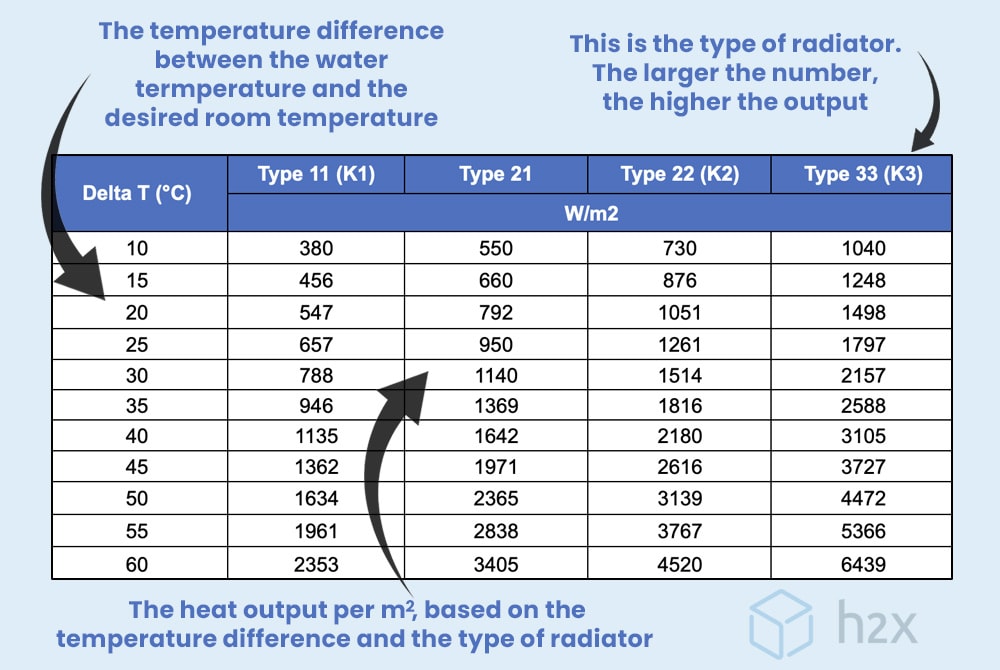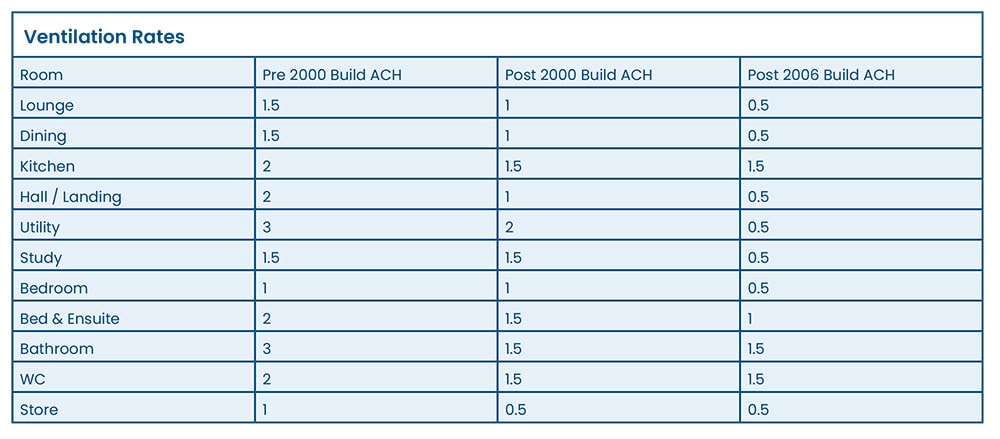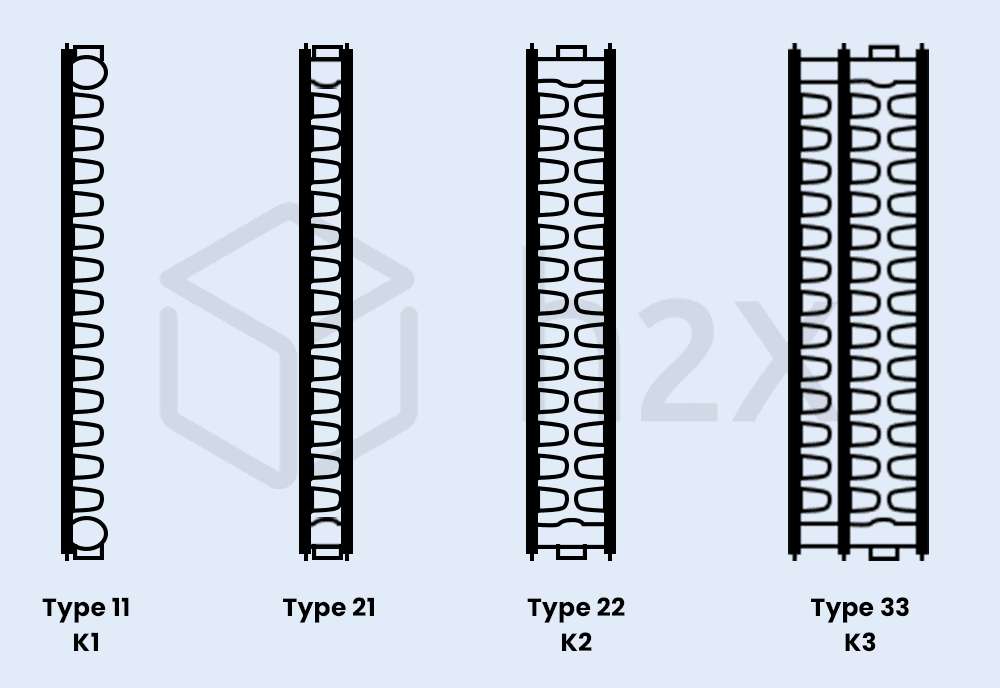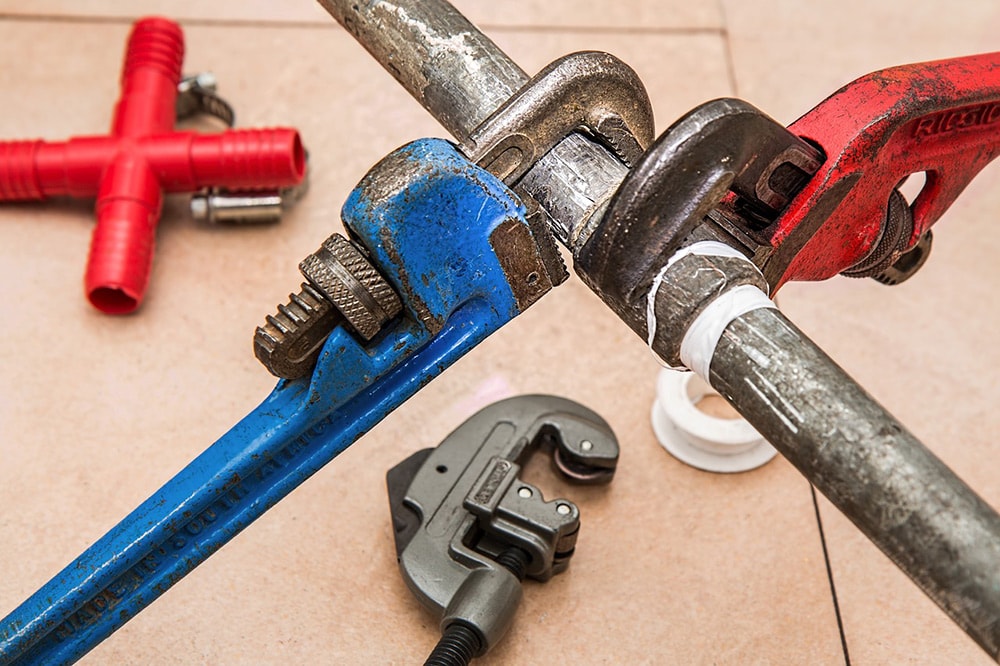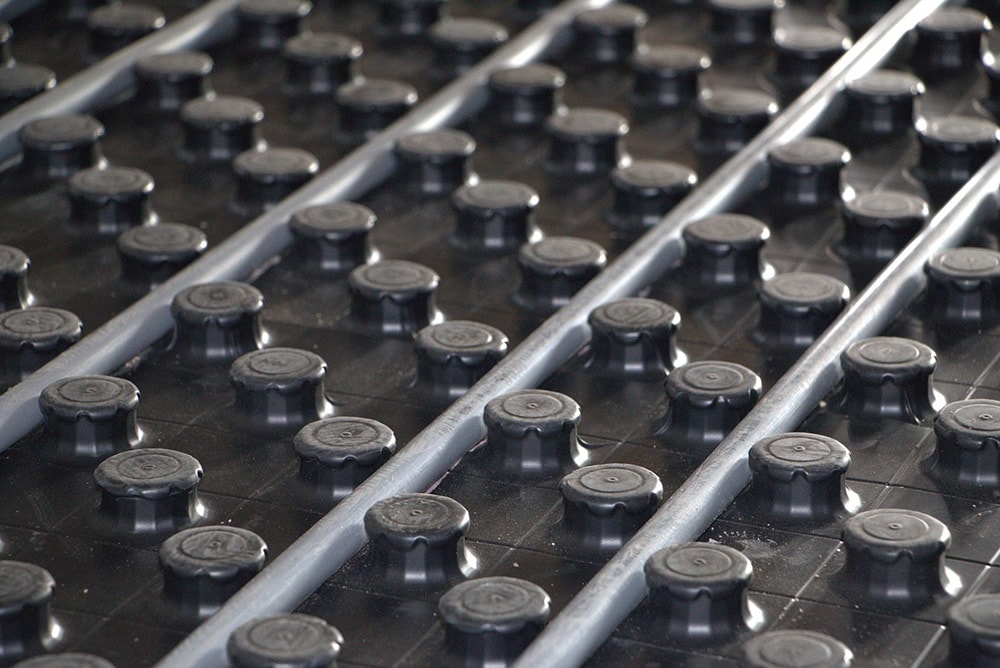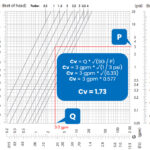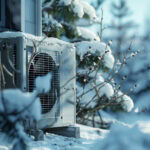
Selecting The Right Radiator Size (Chart Included)
Discover the perfect radiator size for your space with our comprehensive radiator size chart. Achieve optimal heating efficiency today.

An important part of successfully installing a heating system is to ensure each room meets the correct design temperature, which requires selecting the correctly sized radiators for the space.
By understanding radiator sizing and the associated calculations, you can optimise your home’s heating system for maximum comfort and energy savings.
Short Summary
- Understand a radiator size chart to help you to select the right radiator for your home, and ensure it is heated efficiently.
- Calculate the correct size by considering room dimensions, material U values, air changes per hour, and design temperatures.
Radiator Size Chart Understanding
Selecting the correct radiator is crucial for maintaining an optimal temperature in your home.
When selecting the appropriate radiator, consider factors such as heat output, dimensions, design, and delta T.
A radiator sizing guide can help you to easily choose by showing an overview of the British Thermal Unit (BTU) / kilowatt (kW) output based on the various parameters.
The details of the room play a key role in determining the suitable radiator size and understanding how much heat is needed for optimal comfort, you can learn more in our blog on calculating heat loss.
Heat Output Requirements
To choose the right radiator size, you need to know the heat output requirements for each room in the building.
Factors that influence the heat output requirements are:
- Room size
- Number of doors and windows
- Thermal bridging
- Internal and external temperatures
- Number of air changes per hour
- Materials and their associated U Values
Heat loss calculators can help you determine the appropriate size for a given room based on heat output requirements.
These calculators consider the room’s size, the number of windows, and the other factors.
Kilowatts (kW)/ British Thermal Units (BTUs)
Regarding heating output, “BTU” stands for British Thermal Units, and “kW” stands for kilowatts.
Both of those terms are commonly used as units for measuring the output capabilities of a radiator.
How to Calculate the Radiator Size
Calculating the correct radiator size involves several steps, including measuring room dimensions, considering material U values, accounting for air changes per hour, designing to the correct temperatures, and calculating BTU or kW requirements.
Design Temperatures (Delta T)
Choosing the correct design temperatures is a crucial aspect when calculating heat loss.
The difference between design temperatures, often referred to as Delta T, is the difference between the desired internal temperature and the lowest expected outside winter temperature.
For instance, if you desire an internal temperature of 20°C (68°F) and the typical winter temperature in your area drops to -5°C (23°F), then the Delta T would be 25°C (77°F).
This Delta T is used in heat loss calculations to determine the amount of heat your radiator needs to produce to maintain the desired room temperature during the coldest periods.
Remember, the larger the Delta T, the more heat your radiator will need to produce.
Therefore, it’s essential to accurately estimate your design temperatures to ensure optimal performance and energy efficiency of your heating system.
Measuring Room Dimensions
To determine the required heat output for each room, start by measuring the dimensions of the room, including doors and windows. The larger the surface area, the more heat loss there will be.
Material U Valves
Material U values refer to the thermal resistance of a material and are essential for calculating radiator size. They influence the amount of heat that dissipates through the room’s walls, windows, and doors.
When calculating radiator size, it’s important to consider the material U values of windows, walls, and insulation. The lower the U value, the better the thermal resistance e.g. a double glazed window will have a lower U value that a single glazed window.
Air Changes Per Hour
Air changes per hour (ACH) refer to the frequency with which the total air volume in a room is completely replaced with fresh air within one hour.
ACH is important for ensuring sufficient heating and minimising the likelihood of condensation and mold growth.
To calculate air changes per hour, multiply the total volume of air in the room by the required number of air changes in a single hour.
Types of Radiators and Their Sizes
Various types of radiators are available, each with their own size and heat output requirements. Commonly referred to types of radiators include:
- Type 11 / K1 – This is one radiator panel and one set of convection fins.
- Type 21 – This is two radiator panels and one set of convection fins.
- Type 22 / K2 – This is two radiator panels and two sets of convection fins.
- Type 33 / K3 – This is three radiator panels and three sets of convection fins.
How Many Radiators Do I Need
To determine the number of radiators needed for each room, you must first calculate the room’s total BTU (kW) requirement.
Next, calculate each radiator’s BTU (kW) output using the radiator size chart.
Finally, divide the room’s total BTU (kW) requirement by the BTU (kW) output of each radiator to determine the number of radiators necessary.
There is no specific number of radiators that you need, it more depends on the room layout and client preference.
Using Radiator Size Calculators
Radiator size calculators, like the one shown in the video above, can help you calculate radiator size for a room.
By providing information about the room and heat output requirements, these calculators can estimate the right radiator size for your home.
You can even compare the different outputs radiators have between a gas boiler system and a heat pump system, as the heat pump systems operate at a much lower water temperature.
You can use search tools, like Stelrad‘s catalogue, for example, to facilitate the selection of the appropriate radiator.
Verifying new radiator sizes before ordering is important, as sizes can vary significantly depending on the type and model of radiator selected.
Radiator Installation and Maintenance
Is it OK to Oversize Radiators
When contemplating oversizing radiators, it’s important to strike a balance.
Oversizing a radiator can provide improved heat dissipation, but can also result in inefficient energy use.
It is also crucial to avoid undersizing radiators. An undersized radiator may not provide sufficient heat output to maintain a comfortable room temperature, leading to inefficient energy use and a less comfortable living environment.
Choosing Radiator Valves
Selecting the right radiator valves is crucial for optimal heat control.
Thermostatic radiator valves (TRVs) can detect room temperature and turn off the radiator when the desired temperature is achieved, resulting in energy and cost savings.
When selecting radiator valves, consider factors such as the compatibility with the heating system and the aesthetics.
Balancing Radiators
To maintain radiator efficiency and prolong their lifespan, it’s important to balance the system.
To balance the system, start by deactivating your central heating system, opening all radiator valves, and activating the central heating system to observe the rate at which radiators heat up.
Adjust the lockshield valve to ensure each radiator heats up equally, and repeat the process until all radiators are balanced.
Once the radiators are balanced, you can close the valves and reactivate the central heating system.
Bleeding Radiators
Bleeding your radiators is a simple process that helps improve your heating system’s efficiency.
Air can get trapped inside your radiators, causing them to feel cold at the top while remaining warm at the bottom.
This trapped air can prevent the radiator from heating up fully, which can lead to an inefficient heating system and higher energy bills.
To bleed your radiators, follow these steps:
- Ensure your heating system is switched off. This is important to prevent more air from being pumped into the system while you are bleeding the radiators.
- Locate the bleed valve. This is usually found at the top of the radiator and looks like a small round hole with a square inside it.
- Insert your radiator key into the bleed valve and turn it anti-clockwise. You should hear a hissing sound as the air escapes.
- Once water starts to leak out of the bleed valve, this means all the air has been released. At this point, you should close the bleed valve by turning your radiator key clockwise.
- Repeat this process for all radiators in your home.
- Once you have bled all the radiators, you may need to repressurize your heating system. Check the pressure gauge on your boiler – if it’s below the recommended level, you’ll need to increase the pressure.
- Finally, switch your heating system back on and check that all radiators are heating up correctly.
Regular bleeding of your radiators can help to maintain the efficiency of your heating system and reduce your energy bills.
Alternative Heating Solutions
To reduce energy usage and heating bills, consider alternative heating solutions such as underfloor heating.
Energy Usage
Energy usage is the amount of energy consumed or utilised in a particular process or activity, usually measured in kilowatt-hours (kWh). To calculate energy usage, multiply the power utilised by the duration of its use.
Some methods to decrease energy consumption include utilising energy-efficient appliances and improving the materials used e.g. double-glazed windows instead of single-glazed.
Heating Bills
Heating bills illustrate the cost of energy used to heat a home, affecting household expenditures and budgeting. Observing heating bills can help identify energy efficiency opportunities and stimulate conservation efforts.
Conclusion
In conclusion, undertaking proper calculations from the Radiator Size Chart is essential for optimising your home’s heating system.
This includes accurately undertaking both the heat loss calculations for the building and for the radiator sizing.

Empower your engineering endeavors with h2x’s cutting-edge Heat Loss Calculation Software, providing accurate calculations to optimise thermal efficiency in building designs.
Harness the power of h2x’s MCS-aligned heat loss tool to elevate the efficiency and precision of your heat loss calculations and heating system designs.
Simplify your projects and elevate energy performance effortlessly through the utilisation of our state-of-the-art tool.
h2x’s straightforward user interface helps engineers produce high-quality designs and work more efficiently, all while adhering to industry regulations.
The software has already been used to size millions of kilometres of pipes in projects across the world.
Book a demo or start a free trial with h2x today to discover how we can help you improve your design and calculation workflow!
Frequently Asked Questions
How do I know what size radiator I need?
To calculate the right size radiator for a room, you need to know the heat loss from the room.
This will ensure that you can select a radiator that is powerful enough to heat the room effectively.
What are the standard radiator sizes?
Radiators typically come in sizes of:
- Type 11 / K1 – This is one radiator panel and one set of convection fins.
- Type 21 – This is two radiator panels and one set of convection fins.
- Type 22 / K2 – This is two radiator panels and two sets of convection fins.
- Type 33 / K3 – This is three radiator panels and three sets of convection fins.
Is it OK to oversize radiators?
It is not recommended to oversize radiators as it leads to energy wastage and takes up unnecessary wall space. The correct size must be chosen to obtain the desired temperature in a space.
How can I use the Radiator Size Chart effectively for my heating needs?
To optimise your heating system, start by measuring your room’s dimensions and noting factors like insulation, windows, and climate. Then, consult the Radiator Size Chart to match your requirements with the ideal radiator size, ensuring efficient and comfortable heating.
What are the different types of radiators available?
Three main types of radiators are available – steel panel, column, and designer. This includes heat-emitter types like towel rails.
How can I reduce my energy usage and heating bills?
Save money on your heating bills by switching to more energy-efficient solutions such as underfloor heating and making sure all appliances are optimised for energy efficiency.
h2x: All-In-One Tool for Calculating, Designing, Estimating, and Paperwork

What's in the Pipeline?
Get technical resources delivered to your inbox weekly!
Testimonials
What Installers Say
What Consultants Say
A game changer for the humble plumber. Incredible.
Brad Winkel
Director at Queenstown Plumbing
Brilliant, simple and easy to use. Game changer.
James Major
Director at Hubb
Big time game changer to the industry!
Viv Jude
Director at UHC
Incredible software! Super user-friendly and allows you to save so much time.
Devni Gamage
Engineer at DMA
h2x is great software, our company use it nearly every day. It is easy to use with direct conversion from h2x to Revit.
Callum Craig
Engineer at WDE
h2x is fantastic software. It is very easy to use and the ability to output to Revit is a fantastic time saver.
Joe Kirrane
Engineer at MEP
